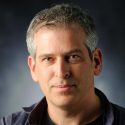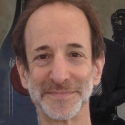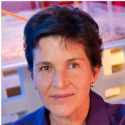Philippe Huneman is CNRS Director of research at the Institut d’Histoire et de Philosophie des Sciences et des Techniques (CNRS / Paris I Panthéon Sorbonne). He is an expert in Philosophy of biology, Kantism and modern German philosophy, History of 18-19th century biology, & Philosophy of science. He is the author of many books and papers.
This talk will be hybrid.
Abstract
Biological individuality and organisms seem to be two coextensive concepts. While philosophers often take organisms – trees, camels, etc.- as paradigm examples of individuality, individuality in general, for most biologists, exist as organisms. However the concept of organism may pertain to two kinds of rationality. In the wake of developmental theory and comparative anatomy, it has been understood as a organized and self-organized whole – a Kantian view often held nowadays by evo-devo thinkers (e.g. Gilbert and Sarkar 2000), as well as many theoretical biologists (e.g. Varela). But another view, stemming from evolutionary biology’s questioning of the evolution of individuality (Michod 1999), addresses individuals from the perspective of units of selection (e.g. Clarke 2010). Organisms then appear as a result of evolution instead of an ontological category. They are, as Huxley (1942) wrote, ‘bundles of adaptation’, which strongly opposes the evo-devo intuition of organisms as a cohesive self-organizing and self-maintaining process. As a consequence, in this second view, individuality does not require self-organisation, and the concept becomes much more liberal than the Kantian view.
But in this talk I’ll confront this conceptual duality to another one, which appears when one considers recent theoretical literature about organisms. In some areas of philosophy and biological theory, authors defend the idea that organisms are agents (be it in an analogical mode, e.g. Grafen 2014, Okasha 2018, or in a strongly ontological mode, e.g. Walsh 2015). In other areas, wholly distinct, people use the ecosystem concept as a scheme to understand organisms (e.g. Costello 2012). Hence, organisms can be understood either as agents pursuing goals, or as sets of heterospecific elements made cohesive by a network of ecological interactions. Both schemes shed light on distinct phenomena, but their articulation remains problematic.
By exploring these two conceptual distinctions regarding biological individuals, I intend to expose the conceptual map proper to the notions of individuality and organisms, and question its internal unity.
Tag Archives: Philosophy and Biology Seminar
Nick Lane (University College London, UK), Why membrane bioenergetics structures cell evolution from the origin of life to agency
Hybrid talk, in-person in Bordeaux; Zoom link available upon request.
Nick Lane (PhD, FRSB, FLS) is Director, Centre for Life’s Origins and Evolution and Professor of Evolutionary Biochemistry in the Department of Genetics, Evolution and Environment at University College London.
Abstract:
Life is a surprisingly good guide to its own origins in terms of energy transduction, metabolism and the genetic code. I will give a conceptual overview of our own work on the origin of life in hydrothermal systems, avoiding detailed experimental data. I will outline how an early requirement for membrane bioenergetics to drive CO2 fixation structured later cell evolution, and specifically the singular origin of complex (eukaryotic) life on Earth. Finally I will touch on how these ideas give insights into the physical basis of feelings and their relationship to agency at the level of cells.
Professor Lane’s research is on the way that energy flow has shaped evolution over 4 billion years, using a mixture of theoretical and experimental work to address the origin of life, the evolution of complex cells and downright peculiar behaviour such as sex. He was a founding member of the UCL Consortium for Mitochondrial Research, and is Co-Director of the UCL Centre for Life’s Origin and Evolution (CLOE). He was awarded the 2009 UCL Provost’s Venture Research Prize, the 2011 BMC Research Award for Genetics, Genomics, Bioinformatics and Evolution, the 2015 Biochemical Society Award for his outstanding contribution to molecular life sciences and 2016 Royal Society Michael Faraday Prize and Lecture, the UK’s premier award for excellence in communicating science.
Nick Lane is the author of five acclaimed books on evolutionary biochemistry, which have sold more than 150,000 copies worldwide, and been translated into 25 languages.
Sabine Eming (virtual), Immunological checkpoints in wound healing and misregulated reparative responses
Dr. Sabine Eming is Professor of Dermatology at the University of Cologne. She received her MD and her training in Dermatology at the University of Cologne. She was research fellow at The Scripps Research Institute and Harvard Medical School.
Dr. Eming’s research interest has focused on the mechanisms how the skin senses damage and how these events translate into a regenerative response or disease. Her research team has extensively studied mechanisms of induction and regulation of the immune response during skin wound healing. Her findings aim to develop novel strategies for pharmacological interventions in pathological healing conditions associated with diabetes mellitus, inflammatory diseases or ageing. (More detailed description below).
Abstract
Poor wound healing and its consequences on health and morbidity are one of the major unresolved medical problems today. Therefore, pharmaceutical advances to boost endogenous regenerative responses and to prevent misregulated reparative responses as e.g. tissue fibrosis are milestones in medicine. Yet, any therapeutic intervention would have to be carefully designed to accommodate the spatial-temporal complexity of intercellular metabolic interactions in the wound environment and to prevent neoplastic growth.
Frequently, impaired wound healing is associated with immune dysfunction leading to prolonged inflammation and tissue damage with a spectrum of pathological outcomes. An ulcerative healing defect in barrier organs (e.g. chronic wounds in the skin, mucosa, or cornea) and the excessive formation of ECM with perturbed architecture leading to organ fibrosis (e.g. hypertrophic scarring of the skin, keloid formation, or scleroderma) represent extremes on this spectrum. The underlying molecular pathology is not resolved and requires deeper mechanistic investigation. Findings generated in the Eming group demonstrate that metabolic pathways in immune cells or stromal cells control the outcome of a tissue damage response and that metabolic dysbalance in these cell types provides an explanation for the spectrum of pathological repair phenotypes. Specifically, using a combination of gene-modified mouse models and transcriptome profiling, the Eming group showed that metabolic reprogramming in macrophages coordinates critical stage-specific repair processes during wound healing. These findings may unravel useful targets for therapeutic innovation, which will be presented and discussed.
More detailed description of research done in Eming’s group
The skin is constantly exposed to environmental stress factors such as injury, microbes, UV light and toxic substances. Therefore, by nature the skin is explicitly well furnished to restore tissue integrity and homeostasis following tissue damage. Cellular and molecular mechanisms that control tissue repair are complex and involve cell-cell and cell-matrix interactions directed by a network of soluble mediators. Furthermore, wound healing mechanisms are not unique to the tissue repair response. In fact, postnatal wound healing in part recapitulates processes in developmental biology and organogenesis. Signals controlling cell growth, migration and differentiation during tissue repair have also emerged as central mediators in cancer biology and other inflammatory disease processes.
Professor Eming leads a programme of work in tissue damage and repair that encompasses the range from basic structure-function analysis, through in vivo models, to human disease. The group is aiming at a deeper understanding on how the skin senses tissue damage and how these events translate into a regenerative response or disease. Our findings might provide the possibility to manipulate the healing response in order to readjust postnatal repair into regeneration and to develop novel strategies for pharmacological interventions in pathological healing conditions associated with diabetes mellitus, inflammatory diseases or ageing. In addition, we are interested to study the interrelation between tissue repair, mechanisms of cancer development and inflammatory skin diseases.
Andrew Ewald (Johns Hopkins), Cellular strategies and molecular mechanisms driving breast cancer metastasis
Andrew J. Ewald, Ph.D.
Virginia DeAcetis Professor and Director, Department of Cell Biology
Director, Giovanis Institute for Translational Cell Biology
Johns Hopkins Medical School
Video of the event:
Abstract:
Cancer mortality is driven by metastasis, the process by which cells escape from the primary tumor and colonize distant organs. We have shown that luminal breast cancer cells can initiate invasion by expressing basal genes, such as keratin 14 (K14). K14+ luminal breast cancer cells collectively invade and intravasate as adherent clusters. Upon arrival at the distant site, K14+ clusters transition to K14- growing metastases. RNA-seq analysis revealed that K14+ cancer cells exhibit high expression of adhesion proteins (e.g. E-cadherin) and low expression of major histocompatibility complex class I (MHC I). We demonstrated genetically that E-cadherin represses invasion and promotes metastasis by acting as a survival factor. We next demonstrated that loss of MHC I expression sensitized K14+ cancer cells to natural killer (NK) cell attack and that cancer cells can induce NK cells to enter a novel metastasis-promoting cell state. We next tested how metastasis mechanisms differ in triple negative breast cancer (TNBC). We found that TNBC tumors express and require both epithelial and mesenchymal markers, as both E-cadherin and vimentin are required for metastasis. We are currently using genetic, multi-omic, and proteomic techniques to identify molecular regulators of metastatic cell states. We also develop and apply co-culture models to test the constraints imposed by intercellular interactions with both cancer and stromal cells.
Tyler Brunet (University of Exeter, UK), Constructive Neutral Evolution and its Close Relatives
Tyler Brunet (University of Exeter, UK) is a Leverhulme Postdoctoral fellow working with John Dupré at Egenis. He is a reformed biologist who turned to philosophy of biology. Among several other topics, he works on constructive neutral evolution (CNE).
Abstract:
Constructive Neutral Evolution (CNE) is a theory for explaining the origin and maintenance of complexity in biological systems without the necessary input of adaptive Evolution by Natural Selection (ENS). CNE was originally developed to explain a few comparatively obscure cases of complexity in molecular biology, including spliceosomal splicing, trypansomal gene editing, scrambled genes in ciliates, and duplicate gene retention. However, since its conception, CNE has been extended and applied to a number of other cases – both novel molecular cases, and cases at cellular, organismal and ecological levels of organization. At the same time, CNE is not the only theory for explaining biological complexity that differs from ENS. For example, prior to the coinage of CNE the theory of Generative Entrenchment (GE) was also used to explain complexity without reliance on ENS alone; many authors in molecular evolution have since deployed a related, similar theory, here called Contingency and Entrenchment (CE). This talk will define and examine cases of CNE, using examples from molecular, cell and organismal biology, then compare it to other theories of complexity. I present CNE as a more general theory of the evolution of complexity which, alongside traditional adaptive explanations employing ENS, can account for a wide range of complex structures and relationships in biology.
Tyler’s publications:
Brunet TDP (2022). Higher level constructive neutral evolution. Biology & Philosophy, 37(4). Abstract. DOI.
Erasmus A, Brunet TDP (2022). Interpretability and Unification. Philosophy & Technology, 35(2). DOI.
Brunet TDP (2021). Local causation. Synthese, 199(3-4), 10885-10908. Abstract. DOI.
Brunet TDP, Doolittle WF, Bielawski JP (2021). The role of purifying selection in the origin and maintenance of complex function. Studies in History and Philosophy of Science Part A, 87, 125-135. DOI.
Brunet TDP, Fisher E (2020). Reasoning Continuously: a Formal Construction of Continuous Proofs. Studia Logica, 108(6), 1145-1160. Abstract. DOI.
Erasmus A, Brunet TDP, Fisher E (2020). What is Interpretability?. Philosophy & Technology, 34(4), 833-862. Abstract. DOI.
Brunet TDP (2019). On Purpose. ISIS, 110(3), 580-581. Author URL. DOI.
Brunet TDP, Doolittle WF (2018). The generality of Constructive Neutral Evolution. Biology & Philosophy, 33(1-2). DOI.
Doolittle WF, Brunet TDP (2017). On causal roles and selected effects: our genome is mostly junk. BMC BIOLOGY, 15 Author URL. DOI.
Inkpen SA, Douglas GM, Brunet TDP, Leuschen K, Doolittle WF, Langille MGI (2017). The coupling of taxonomy and function in microbiomes. BIOLOGY & PHILOSOPHY, 32(6), 1225-1243. Author URL. DOI.
Brunet TDP (2016). Aims and methods of biosteganography. JOURNAL OF BIOTECHNOLOGY, 226, 56-64. Author URL. DOI.
Doolittle WF, Brunet TDP (2016). What is the Tree of Life?. PLOS GENETICS, 12(4). Author URL. DOI.
Brunet TDP, Doolittle WF (2015). Multilevel Selection Theory and the Evolutionary Functions of Transposable Elements. GENOME BIOLOGY AND EVOLUTION, 7(8), 2445-2457. Author URL. DOI.
Doolittle WF, Brunet TDP, Linquist S, Gregory TR (2014). Distinguishing between “Function” and “Effect” in Genome Biology. GENOME BIOLOGY AND EVOLUTION, 6(5), 1234-1237. Author URL. DOI.
Brunet TDP, Doolittle WF (2014). Getting “function” right. PROCEEDINGS OF THE NATIONAL ACADEMY OF SCIENCES OF THE UNITED STATES OF AMERICA, 111(33), E3365-E3365. Author URL. DOI.
Uri Alon (Weizmann Institute of Science, Israel), Simplifying inflammation and fibrosis
Uri Alon is Professor, Department of Molecular Cell Biology, Weizmann Institute, Israel. His lab studies biological circuits using a combined experimental and theoretical approach, aiming to uncover general underlying principles that govern their functioning and evolution.
Video of the talk:
Abstract:
Fibrosis -excess scarring- is a condition that cuts across medicine, causes many diseases, and has no cure. It is a complex process with many cell types and molecules. We will show how a minimal mathematical model can form concepts that explain the basic features of fibrosis. These concepts led to experiments that provide new drug candidates that reduce fibrosis in mice for heart attacks and liver fibrosis. No knowledge of either fibrosis or math is needed to understand this talk.
Steven Frank (Univ. of California Irvine, USA) (Zoom only), Robustness and complexity: how evolution builds precise traits from sloppy components
Steven Frank is Donald Bren Professor & Distinguished Professor, Ecology & Evolutionary Biology
School of Biological Sciences at University of California Irvine (USA)
His main research interests concern evolutionary genetics and host-parasite interactions.
URL: stevefrank.org
Video of the talk:
Academic Distinctions
Fellow, American Academy of Arts and Sciences, Elected 2012
Fellow, American Association for the Advancement of Science, Elected 2009
John Simon Guggenheim Fellowship, 1995
Theodosius Dobzhansky Prize, Society for the Study of Evolution, 1988
Young Investigator Prize, American Society of Naturalists, 1986
Abstract:
The first part of the talk describes the paradox of robustness. When a system robustly corrects errors in its components, the direct selective pressure on those components declines. Weakened selection on components causes them to become less reliable, maintain more genetic variability, or change in design. Loosened constraint on component-level design allows complexity to creep in arbitrarily, without natural selection to remove unnecessary elaboration. New forms of organismal complexity appear, seemingly without any clear logic. In the second part, I link the paradox of robustness to similar ideas developed by others, such as the theory of constructive neutral evolution. In the third part, I unify previous ideas into a more general perspective. I then link the paradox of robustness to the observation that, in evolution, intermediate stages in development tend to be more strongly constrained than earlier or later stages. This leads us to John Doyle’s discussion of the universal architecture of complex robustly designed systems in engineering and in biology, in which there is an important distinction between hardware and software layers. I link the observations about evolutionary constraints in development to Doyle’s hardware vs software distinction. Finally, I argue that constructive neutral evolution is mainly about genomic hardware, in which neutrality likely dominates, whereas the broader paradox of robustness also includes functional components in the software layer, in which nonneutral economic costs and benefits likely dominate.
This talk will be given via Zoom. Please contact Thomas Pradeu if you’d like to join us for this seminar.
Deborah Gordon (Professor of Biology, Stanford University, USA), The ecology of collective behavior
Deborah Gordon is Professor of Biology at University of Stanford (USA).
Deborah Gordon is a world-leading specialist of ant colonies and collective behaviors. With her group, she uses ant colonies to investigate systems that operate without central control, and explore analogies with other systems, such as the internet, the immune system, and the brain. She is interested in collective behavior, which can take many forms, such as emergence, self-organization, superorganism, quorum sensing, artificial intelligence, and dynamical networks.
Abstract:
Collective behavior operates without central control, using local interactions among participants to allow groups to respond to changing conditions. It is widespread in nature, not only producing the coordinated movement of bird flocks or fish schools, but also regulating activity in natural systems from cells, as in cancer metastasis or embryonic development, to the social groups of many vertebrates. An ecological perspective on collective behavior examines how collective behavior adjusts to changing environments. Ant colonies function collectively, and the enormous diversity of more than 14K species of ants, in different habitats, provides opportunities to look for general ecological patterns. The collective foraging behavior of harvester ants in the desert adjusts activity to manage water loss, while the trail networks of turtle ants in the canopy of the tropical forest adjust to rapidly changing resources and vegetation. These examples suggests how systems with similar dynamics in their surroundings have evolved to show similar dynamics in the regulation of collective behavior. An ecological perspective can contribute to new insights in medical research.
See here Deborah Gordon’s TED talk: “What ants teach us about the brain, cancer and the Internet”
Publications of Deborah Gordon.
Ned Block (Silver Professor of Philosophy and Psychology, New York University, USA), Perception is non-conceptual
Ned Block is Silver Professor in the Departments of Philosophy, Psychology and Center for Neural Science at New York University (NYU), NY, USA.
Video:
Abstract
This talk will argue that the reason that perception is fundamentally different from cognition is that perception is non-conceptual whereas cognition is conceptual. I will review evidence that infants between the ages of 6 and 11 months can see colors but cannot accomplish even the simplest kinds of cognition involving colors. Children of the same ages can see shapes and also exhibit cognition with shape concepts. I will argue that the upshot is that color perception of these infants is non-conceptual and that one can extrapolate from this finding to all of perception.
David Bilder (Univ. Berkeley, USA), Ancient origins of tumor-host interactions: insights from the Drosophila model
The Bilder Lab (University of Berkeley, USA) studies the molecules and mechanisms that govern the polarity, growth, and morphogenesis of epithelia, the fundamental tissue of all animals and the major constituent of human organs. They also use Drosophila cancer models as a simple system to understand both how epithelial organization prevents tumor formation and how tumors actually kill their hosts.
Example of recent work:
Bilder et al., Tumour-host interactions through the lens of Drosophila, Nature Reviews Cancer (2021)
There is a large gap between the deep understanding of mechanisms driving tumour growth and the reasons why patients ultimately die of cancer. It is now appreciated that interactions between the tumour and surrounding non-tumour (sometimes referred to as host) cells play critical roles in mortality as well as tumour progression, but much remains unknown about the underlying molecular mechanisms, especially those that act beyond the tumour microenvironment. Drosophila has a track record of high-impact discoveries about cell-autonomous growth regulation, and is well suited to now probe mysteries of tumour – host interactions. Here, we review current knowledge about how fly tumours interact with microenvironmental stroma, circulating innate immune cells and distant organs to influence disease progression. We also discuss reciprocal regulation between tumours and host physiology, with a particular focus on paraneoplasias. The fly’s simplicity along with the ability to study lethality directly provide an opportunity to shed new light on how cancer actually kills.










